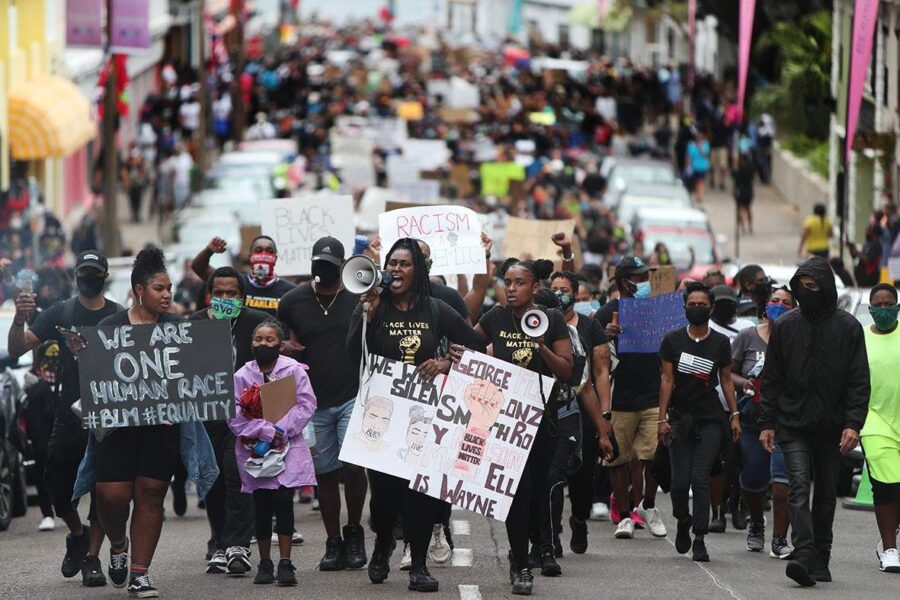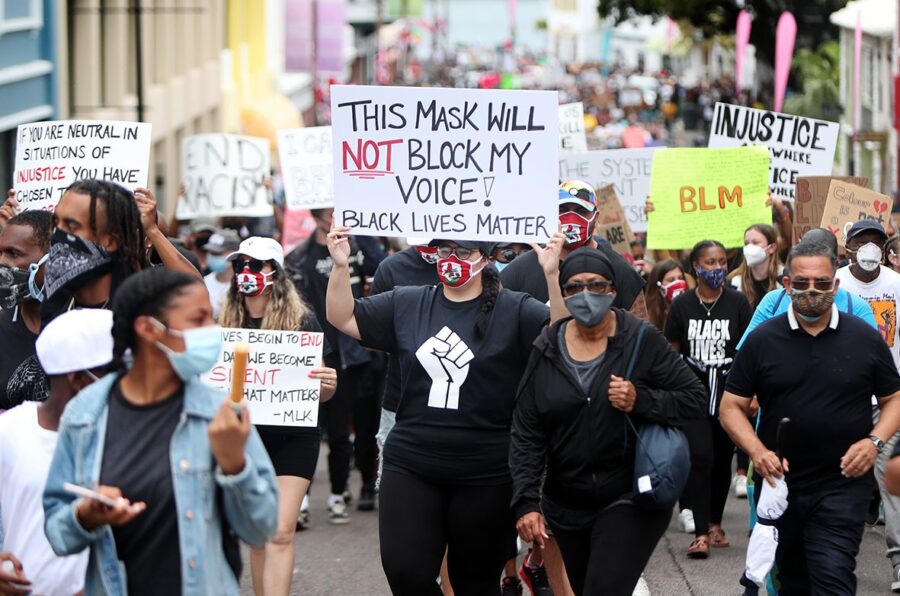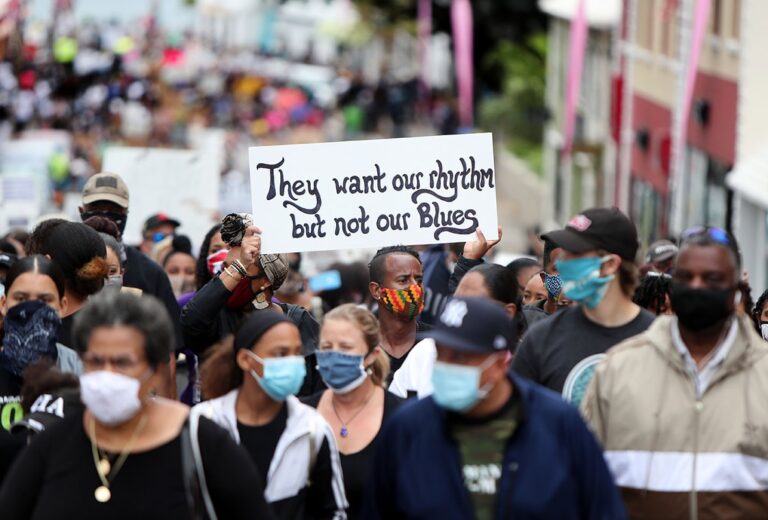by Donna Janda
In the wake of global social justice movements, Bermuda has witnessed its own wave of change, particularly following the Black Lives Matter (BLM) March. This pivotal event not only marked a significant moment in the island’s history, but also set the stage for a deeper exploration of racial equity and restorative practices.
The BLM March in Bermuda: A Catalyst for Change
The BLM March in Bermuda, ignited by the tragic murder of George Floyd in the USA, was a monumental event. It drew one of the biggest crowds Bermuda has experienced during a march – highlighting the island’s solidarity with global movements against racial injustice.
However, as Cordell Riley points out, the event’s aftermath raises questions about the sustainability of such movements. He noted the irony of witnessing white participants chanting against white supremacy, wondering whether these sentiments were lasting feelings, or a momentary lapse.
Stacey-Lee Williams, who also attended the march, expressed a sense of pride in seeing the community, including students and faculty from the school where she was working, come together in solidarity with the black Bermudians who were marching for a better Bermuda. She emphasized that while the march brought attention to racial issues, the challenge lay in sustaining this progress – a task CURB has been committed to for almost twenty years.
 Integrating Dialogue with Action Post-March
Integrating Dialogue with Action Post-March
The dynamic energy of the BLM March brought attention to racial injustice, but it also highlighted a vital truth: real change requires more than just chanting and marching. Real change demands continued dialogue and action, a principle that CURB embodies through its commitment to Restorative Practice.
The conversation must be ongoing, and engage all relevant parties; and listening is just as essential as speaking. Ms Williams highlights the role of active listening in CURB’s Truth and Reconciliation Community Conversations (TRCC), which are fundamental in resolving racially charged situations. These talks, grounded in Restorative Practice, create an environment where diverse groups can engage in honest, transformative dialogues. It is a process that goes beyond the immediate energy of public demonstrations, focusing instead on sustained, meaningful interaction, and understanding.
Mr Riley recounts CURB’s journey with Restorative Practice, beginning with their participation in a World Congress Symposium, and subsequent training at Queen’s University. These experiences reinforced their conviction that Bermuda, with its close-knit community and small population, is an ideal setting to demonstrate the effectiveness of Restorative Practice.
In the aftermath of the BLM March, CURB’s role in fostering dialogue and understanding became even more crucial. Marches can spark awareness, but lasting change is nurtured through continued, in-depth conversations and collaborative actions.
As Bermuda moves forward from the heightened awareness created by the BLM March, the need for racial justice organizations to work together with the community becomes increasingly clear. There is a need, a longing, for certain voices to be heard, and for others to be accepted.
This approach ensures that the momentum from the march is not lost, but instead transformed into a sustained effort towards racial equality and justice.

Challenges and Opportunities in Integrating Restorative Practices
Integrating Restorative Practice into movements like BLM presents unique challenges and opportunities. The primary challenge, as Mr. Riley and Ms. Williams note, is securing community buy-in, especially when confronting deep-seated anger and frustrations stemming from historical injustices.
However, they see a significant opportunity for the conceptual purview of Restorative Practice to transform the short-term effects of organized protests into meaningful, sustainable, long-term change.
CURB’s aspiration to transform Bermuda into a fully restorative country reflects their commitment to this cause, and their belief that Restorative Practice truly works. Many of CURB’s upcoming restorative-oriented events and initiatives focus on highlighting the impacts of social issues, like gang violence, through art and personal testimonies. These efforts aim to re-sensitize the community to these issues – while also actively unravelling the crippling desensitization that Bermuda has suffered from – and propel them into action.
Sustaining the Momentum Beyond the March
The BLM March marked a profound moment in Bermuda’s fight for racial justice. It rallied the community, sparking vital conversations and heightened awareness about entrenched racial injustices. However, the apparent dormancy of the BLM Bermuda movement underscores a critical challenge in social justice efforts: ensuring continuity and long-term impact.
While the march was successful in mobilizing Bermudians around an essential cause, the real test lies in maintaining this momentum. This is where racial justice organizations step in, playing a pivotal role in continuing the work initiated by the march. The fleeting presence of proletarian organizations like BLM Bermuda, and the Free Democratic Movement (FDM) is frustratingly indicative of a common hurdle in grassroots activism: sustaining the drive for change and translating immediate reactions into lasting reforms.
To be fair, the legacy of the BLM March has transcended a single day of solidarity. It has kindled a continuing journey towards racial justice, with social justice organizations ensuring that the conversation not only persists, but also moves toward systemic change that will make lasting, real-world impact.
The BLM March may have concluded, but the path towards a restorative Bermuda, where equality and justice are not just ideals, but realities, continues. Topics like the reparations debate, social injustice, the glass ceiling, the existence of ‘two Bermudas,’ white privilege, and much more that were once taboo within these shores can be openly broached now – and that is due in no small part to monumental events like the BLM March.
This journey is, therefore, emblematic of a broader movement, echoing the call for continuous action in the pursuit of racial equality. So, while the march is now a note in history, its ripples will continue to echo into a new Bermudian reality.

